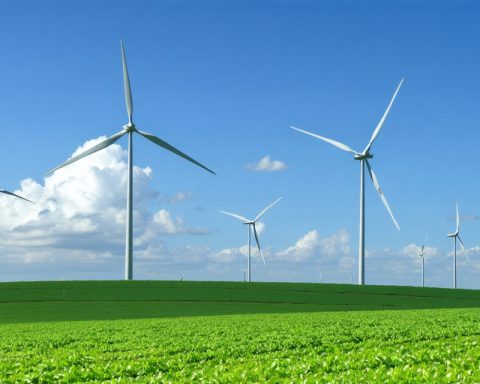- The U.S. Treasury Department launched transformative hydrogen production regulations in early 2025, propelled by the Inflation Reduction Act of 2022.
- The Hydrogen Tax Credits reward low-carbon hydrogen production, incentivizing lower greenhouse gas emissions.
- The regulations are built on three key pillars: Incrementality, Temporal Matching, and Deliverability.
- Incrementality requires new renewable power sources, with exceptions for recent carbon capture and certain nuclear enhancements.
- Temporal Matching mandates synchronized power generation and usage by 2030 to optimize renewable energy resources.
- Deliverability ensures geographical consistency in energy sourcing with some flexible exceptions.
- The “first productive use” requirement for renewable natural gas is abolished, replaced by a lifecycle GHG rate calculation using a gas book-and-claim system.
- These regulations highlight a strategic move toward a sustainable energy future, with potential policy shifts under a new administration.
In an electrifying start to 2025, the U.S. Treasury Department unveiled transformative regulations that redefine the realm of hydrogen production in the nation. Amidst the tumult of over 30,000 public comments, the final rules emerge, promising to propel America towards a sustainable energy future while balancing the complexities of economic and environmental interests.
Designed under the expansive umbrella of the Inflation Reduction Act of 2022, the Hydrogen Tax Credits aim to invigorate the low-carbon hydrogen sector by offering substantial incentives. Yet, these lucrative credits come with a stipulation: they are intricately linked to the production process’s greenhouse gas emissions rate. The lower the emissions, the higher the rewards—a strategic move to drive innovation and commitment to clean energy.
The regulations rest on three robust pillars, each constructed with precision to steer the tidal wave of hydrogen enthusiasm toward a path that minimizes induced GHG emissions. At the heart of this effort is a stringent book-and-claim system powered by energy attribute certificates (EACs). This mechanism is essential in ensuring transparency and accountability in the process of diverting low-emission energy sources toward hydrogen projects.
The first pillar, Incrementality, champions renewable innovation by requiring that power sources for hydrogen be newly established, except under defined circumstances. Facilities enhancing their sustainability with carbon capture and sequestration within the past 36 months qualify for inclusion, as do certain nuclear reactors teetering on financial precipices, provided they integrate hydrogen production efforts.
Temporal Matching stands as the second pillar. It extends a crucial transition period until 2030, mandating that hydrogen producers synchronize the generation and use of power on an hourly basis. This echoes the clockwork precision necessary in aligning energy production and consumption, laying a strong foundation for a network of renewable resources working harmoniously.
Deliverability, the third pillar, envisions a geographically consistent framework for energy sourcing. This pillar bends, albeit slightly, to accommodate exceptions, fostering a practical approach to regional energy distribution.
The regulations’ tapestry is further enriched by the abolition of the “first productive use” requirement for renewable natural gas (RNG), opting instead for a holistic lifecycle GHG rate calculation via a novel gas book-and-claim system. Simultaneously, the adoption of the GREET model provides a safe harbor for producers, aligning economic feasibilities with environmental responsibilities.
As America stands on the brink of this hydrogen renaissance, the landscape faces potential shifts under the forthcoming Trump administration. The administration’s energy policy leans towards a comprehensive domestic power strategy, yet the fate of these credits remains uncertain—whether they expand with relaxed emissions constraints or face a stark repeal.
The key takeaway? This regulatory overhaul is a clarion call for energy producers and policymakers: embrace innovation, adhere to environmental responsibility, and unlock the economic potential of a greener hydrogen future. This is not merely a legislative change; it’s a pivotal stride toward sustainable energy leadership on the global stage.
The Future of Hydrogen: What the New U.S. Regulations Mean and How They Could Impact You
Understanding the New Hydrogen Regulations
The U.S. Treasury Department’s introduction of transformative regulations in early 2025 marks a pivotal turning point for the hydrogen sector in the United States. These rules aim to turbocharge the low-carbon hydrogen production industry, leveraging the Inflation Reduction Act of 2022 as a foundational platform to escalate sustainable energy efforts. The newly implemented Hydrogen Tax Credits are designed to motivate producers to minimize greenhouse gas emissions, offering greater rewards for cleaner production processes.
Key Elements of the New Regulations
Three Pillars of the Hydrogen Directive
1. Incrementality: This mandates that power sources for hydrogen production be newly established. The logic behind this is simple: New establishments are more likely to employ cutting-edge technologies, thus reducing emissions substantially. Existing facilities can qualify if they have recently integrated carbon capture and sequestration technologies or if they are nuclear reactors that are financially unstable but beginning hydrogen projects.
2. Temporal Matching: Highlighting the importance of precision, this requirement ensures that power generation and its utilization in hydrogen production occur simultaneously on an hourly basis by 2030. This synchrony fosters a harmonious and efficient energy resource network.
3. Deliverability: This pillar ensures energy sourcing remains geographically consistent, with some flexibility to adapt to regional energy distribution challenges. This adaptability is key to addressing varying regional energy dynamics.
Real-World Implications and Use Cases
– Boosting Innovation: The regulations promote technological advancements by pushing producers to develop and deploy more efficient, low-emission hydrogen production methods.
– Economic Opportunities: With rising demand for clean energy, businesses could see increased investment and job creation within the sector.
– Environmental Impact: Successfully applying these regulations could significantly curtail U.S. greenhouse gas emissions, positively impacting global climate change efforts.
Pros & Cons Overview
Pros
– Environmental Benefits: The focus on low emissions directly contributes to reduced environmental impact.
– Economic Growth: Potential for job creation and investment within the clean energy sector.
– Energy Independence: Encourages domestic energy production, lessening reliance on foreign resources.
Cons
– Initial Costs: Higher upfront investments in new technologies may be a barrier for some companies.
– Complex Compliance: Producers might face challenges aligning operations with intricate regulations.
Insights & Predictions
– Market Shift: As these regulations spur cleaner hydrogen production, industries may shift towards hydrogen-based energy, impacting traditional fossil fuel markets.
– Potential Policy Changes: Depending on the political landscape, modifications to these regulations could either broaden scope or lead to reductions in incentives.
Tips for Producers & Policymakers
– Stay Informed: Keep abreast of any amendments to these regulations or changes in political administrations that may affect them.
– Innovate Continuously: Invest in research and development to stay ahead in energy-efficient technologies.
– Engage Stakeholders: Foster relationships with policymakers, environmental groups, and investors to build a robust support network.
– Utilize Available Resources effectively
Quick Takeaways
The new regulations by the U.S. Treasury signify a determined move toward a sustainable energy landscape. They challenge producers to innovate and reduce emissions while offering significant financial incentives. As the green hydrogen sector grows, stakeholders must remain agile and informed, prepared to invest in cutting-edge technologies that will shape the future energy framework.
For more information about the latest developments and involvement in sustainable energy initiatives, visit the U.S. Department of Energy.














